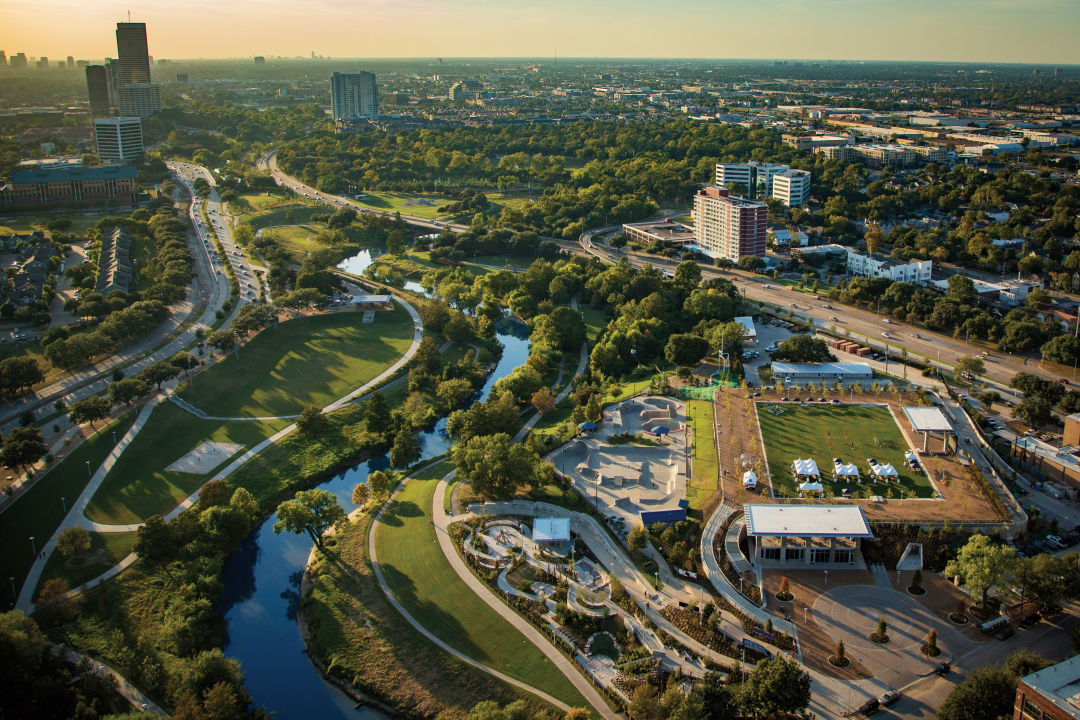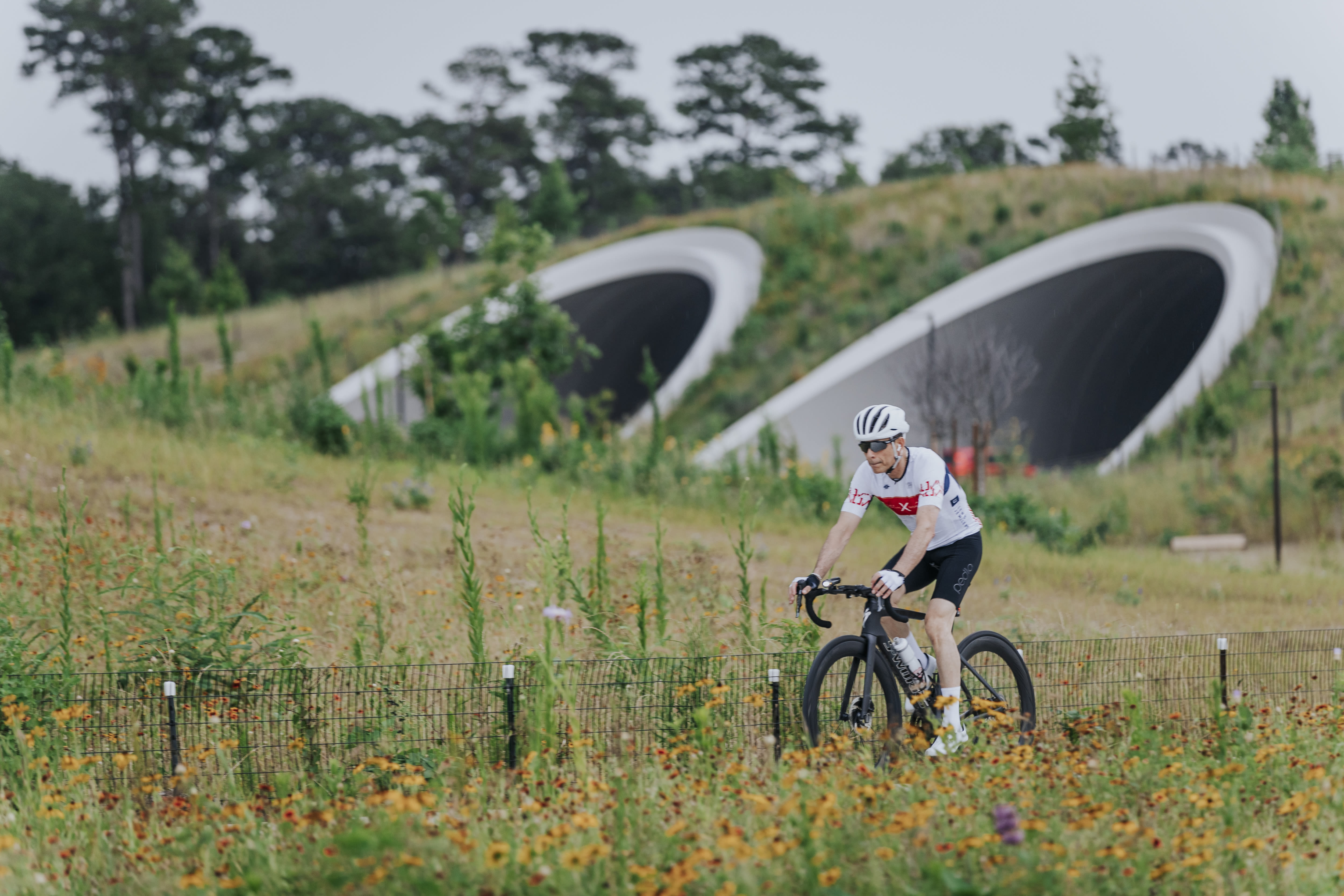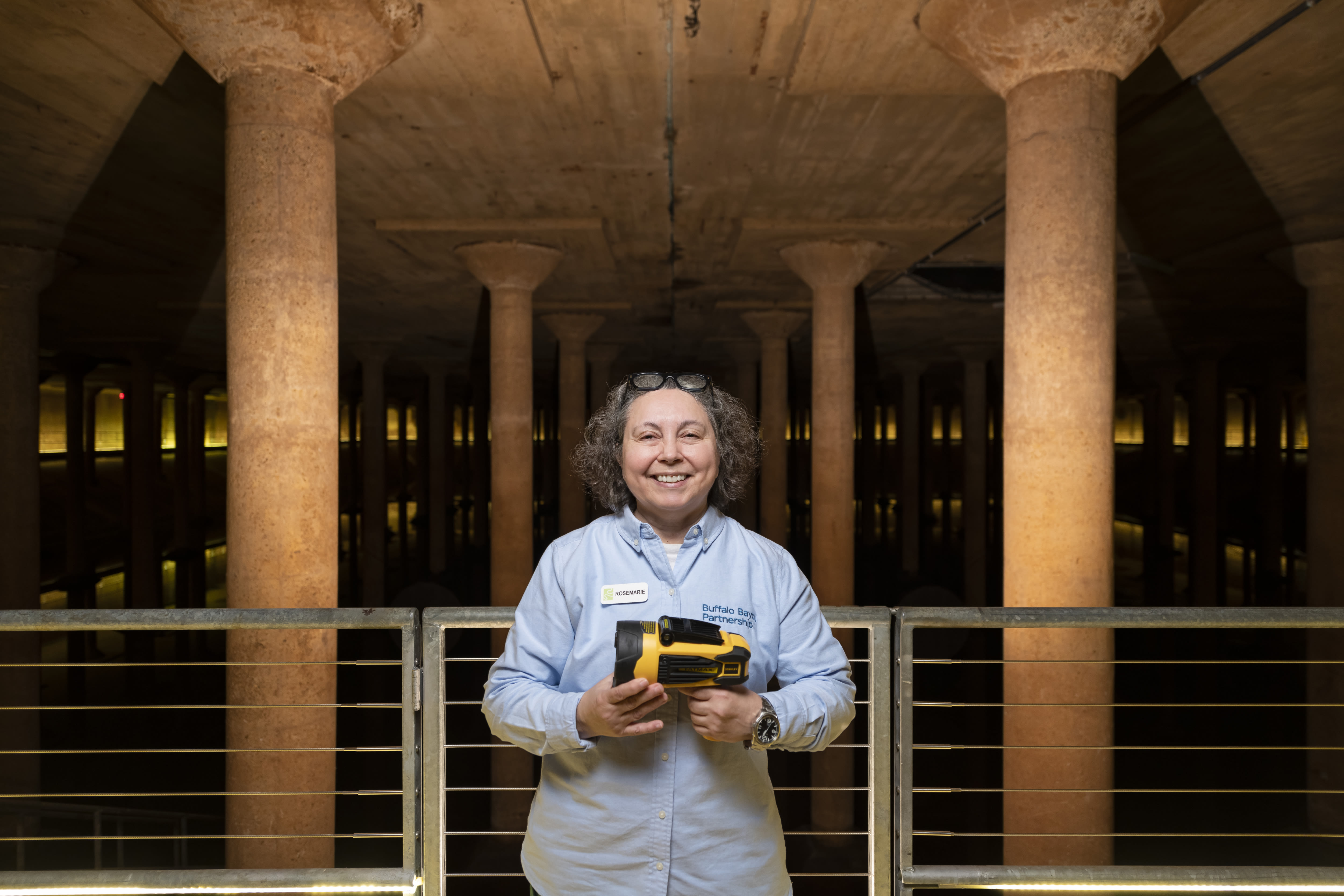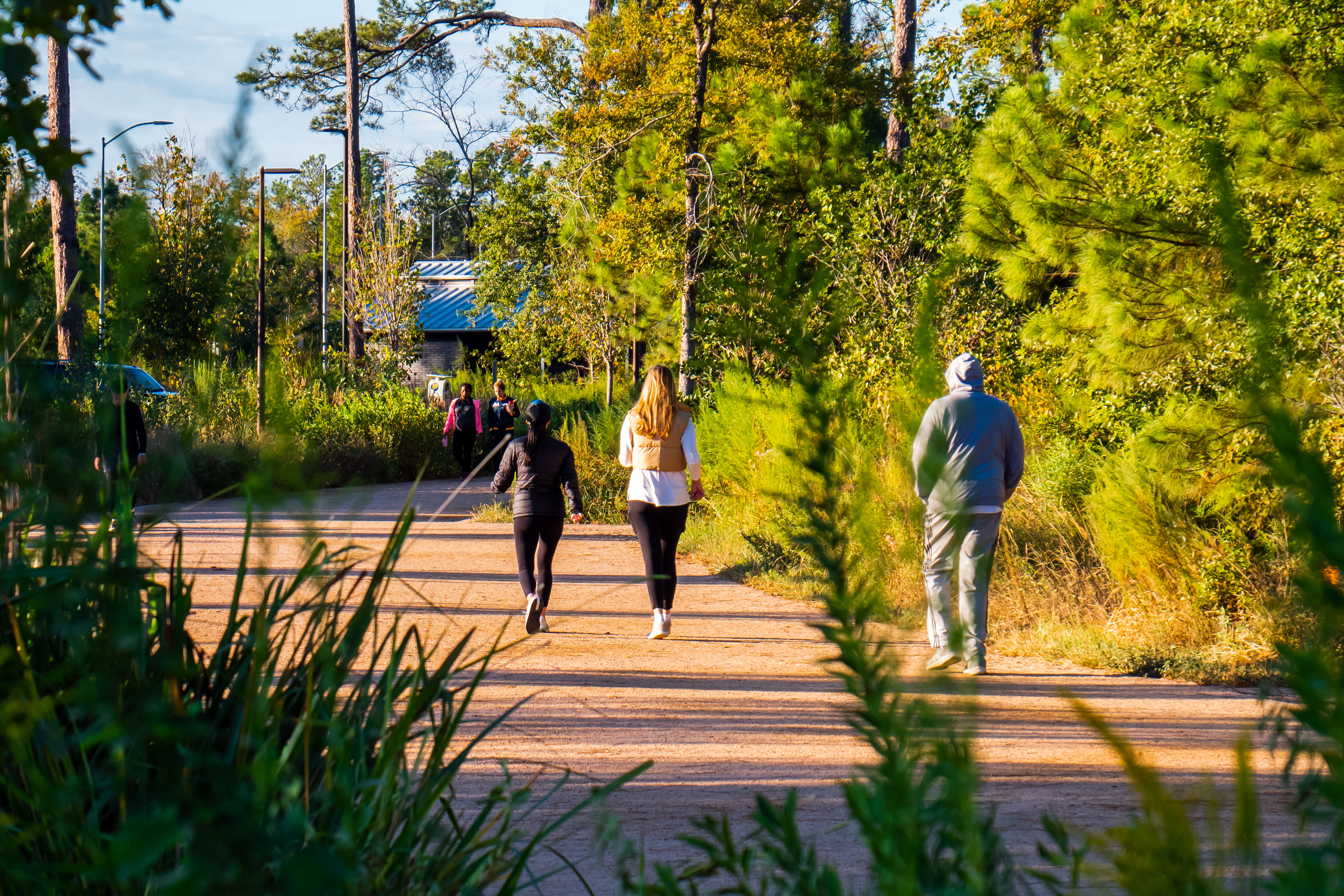How Do You Plan a Park That’s Meant to Flood?

Image: Visit Houston
When the team from SWA Group, an international landscape architecture firm, collaborated with the Buffalo Bayou Partnership on a master plan for Buffalo Bayou Park, they faced unique challenges they hadn’t quite encountered before. Not only is ours an urban park that runs along a natural, running body of water, it’s surrounded on both sides by development. And since the bayou is inextricably linked to Houston’s drainage system, they knew that at times, the park was going to get really, really wet.
“The first and largest obstacle is just the fact that if you’re trying to put in permanent park improvements, and anything below the very tops of the slopes will go underwater relatively frequently—at least a couple times a year,” says Scott McCready, a principal at SWA.
Because of this, the plan called for raw concrete and galvanized steel, which holds up in floods and is easy to clean afterward. All of the electrical wiring is above the floodplain, and the lighting fixtures include an automatic off-switch which activates when waters rise to a certain level.
The lawn has been reduced by about 50 percent, McCready says, replaced by nearly 14,000 trees, as well as wildflowers and native grasses whose more robust root systems absorb more water deeper into the ground. These plants provide the additional benefit of creating a natural habitat for local wildlife and allowing park-goers to experience nature rarely glimpsed in an urban setting.
The result is both seductive and surprising: a protected pocket of Houston’s native landscape, in the middle of the busiest part of the city, that feels entirely removed from urban life. “We wanted to create a place for people, but we also really wanted to maintain and enhance the quality from an ecological standpoint. That involved compromises, including natural banks. We left a rough natural bayou edge, and it’s not going to be a perfectly pristine edge,” McCready says. “It will gradually erode on the edges, and it requires a lot of maintenance. That was a calculated risk and consideration for the project long-term.”
That maintenance includes removing silt buildup on bayou banks, which can sometimes add eight inches or more after a significant rain event, as well as removing invasive species from the water and its banks and cleaning up after floods. Meanwhile, some parts of the park—like Johnny Steele Dog Park, which has gone underwater in every major rain event since its opening—will always require a higher level of maintenance.
“We kept the park where there was basically an existing dog park, and it’s in a low spot. It was understood that it would go underwater, but it was exacerbated in this record year. And it also rained a lot while we were under construction, so it was harder for the plants, which help absorb water, to get established early on,” McCready says, adding that the Partnership is exploring maintenance options that might help mitigate the impact of flooding.
Like so many others, McCready sees the park as a game-changer. “At the end of the day, parks and trails aren’t just things that are nice to have, they’re things that are necessary to have for the health and happiness of Houston’s citizens,” he says. “It’s an added benefit where we already have a natural area existing. It helps get Houstonians back in touch with the natural systems that aren’t easily identified in the core of the city, and to still be able to see that firsthand raises awareness about the importance of preserving and enhancing them.”




